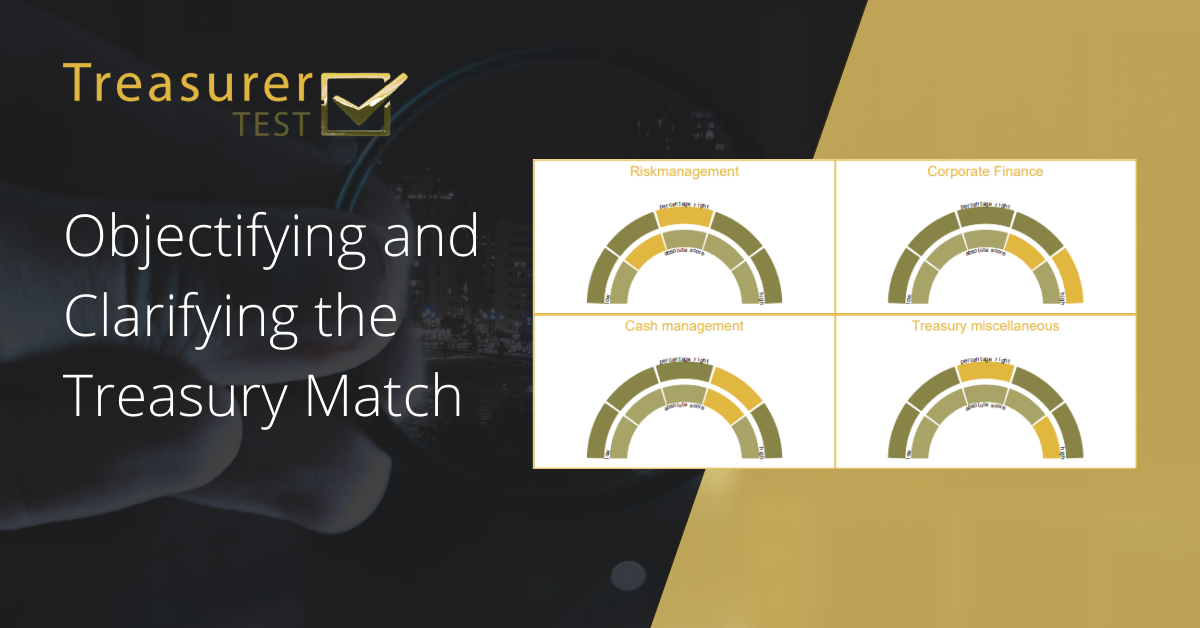Objectifying and Clarifying the Treasury Match
Treasurer Search, a partner of the Treasurer Test, noticed an increased number of candidates taking the Test. In this blog, Pieter de Kiewit tells us two examples where the Treasurer Test helps them with recruitment processes.

In my opinion, in too many recruitment processes the “click” or “gut feeling” is valued too strongly. Aspects like these should not be ignored or down-talked, but objectively measuring hard facts deserve a more prominent place. The toolkit of professional recruiters and hiring managers hold instruments like cv & diploma screening, interviews and reference checks that all require HR and vacancy-related expertise. As you might know, we deploy the Treasurer Test more often. Let me tell you about two examples where this assessment really helps us.
What is the value of his non-western treasury expertise?
Kim is enthusiastic about a candidate who moved to The Netherlands a while ago. His experience and education are relevant, but time and time again clients prefer local candidates because they feel more at ease about their expertise. During the conversation, the candidate can answer several technical questions about treasury, but it does not yet hold enough weight to convince others how good he is. This was easily solved by asking the candidate to take the Treasurer Test.
During the Test, the candidate had to answer 30 questions per category, with a time limit of 10 minutes per category to answer as many questions as possible. The results of the candidate were compared to other peers who have 9 or more years of experience in corporate treasury, which provides valuable benchmarking possibilities. The report of the Test provides a clear overview of the results, and gave us interesting insights:
In the upper semi-circles, his “percentage right” is compared with that of others in his peer group. A candidate who gambles will always be on the left-hand side. The report shows the candidate is average or above for all categories.
The lower semi-circles show how he scored based upon his total number of questions answered right, also compared to the same peer group. The first questions are relatively easy and get increasingly more complex. The more complex the questions, the higher the reward score. Also here he did well, perhaps in risk management, there is room for improvement.
Based on both these observations, we can more confidently inform clients that the candidate has the skills and knowledge required for many corporate treasury roles!
Does he have the personality?
One of our clients is a Fintech company with an aggressive expansion strategy. They asked us to find candidates who speak the language of the treasurer, understand the trade, but can also help clients use the product and communicate with their own R&D. Many treasurers are job content-driven, and not by communication and new solutions. That is why the personality profile part of the Treasurer Test is really interesting. The Test includes a substantial assessment based on the Big5 Typology. Part of the results for one of the candidates look like this:
Needless to say that these are results our client likes a lot. Although the score on the empathy scale deserves further attention.
The Test is a relatively new solution that already brings us a lot of value. At the same time, I want to stress it measures a moment in time and is the only one of many instruments to solidify the match. Also, I am sure new insights will bring the Test development team to invest further. If you have questions about the Treasurer Test, do not hesitate to contact me or Wout.
Get inspired about Treasurer Test possibilities!
Wout van Wijlick, Manager of the Treasurer Test
Fill in the form, or contact Wout directly. Together we will explore how the Treasurer Test can be of benefit to you



